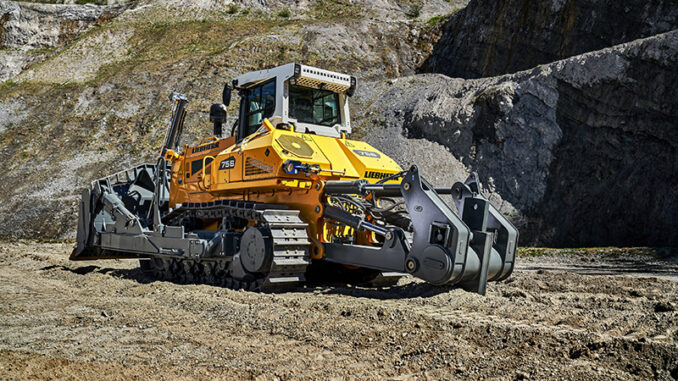
The world of construction is a symphony of labour and machinery, working together to create structures that shape our cities and communities. At the heart of this intricate dance are construction equipment, the unsung heroes responsible for digging, lifting, transporting, and shaping the materials that turn architects’ dreams into reality.
In this comprehensive guide, we’ll explore the various types of construction equipment, their functions, and the pivotal role they play in the construction industry.
I. Earthmoving Equipment
- Excavators: Excavators are the workhorses of the construction site. These heavy machines use a bucket attached to a hydraulic arm to dig, lift, and load materials like soil, rock, and debris. Excavators come in various sizes and configurations to suit different project requirements, from small residential tasks to large-scale infrastructure projects.
- Bulldozers: Bulldozers are known for their raw power and efficiency in pushing and grading earth and materials. Equipped with a large, broad blade at the front, they are indispensable for clearing land, leveling surfaces, and creating embankments. Their robust design and powerful engines make them suitable for even the toughest terrains.
- Loaders: Loaders are versatile machines used to transport materials, such as sand, gravel, and asphalt. They are equipped with a front-mounted bucket that can be raised, lowered, and tilted to scoop and load materials onto trucks or into designated areas. Wheel loaders and skid steer loaders are common variations used in construction.
- Graders: Graders are precision instruments in road construction. They feature a long, adjustable blade used to level the ground, create slopes, and achieve the desired road surface grade. Graders ensure that roadways are smooth, facilitating safe and comfortable travel.
II. Lifting and Material Handling Equipment
- Cranes: Cranes are the giants of construction equipment, capable of lifting and moving exceptionally heavy loads. Tower cranes, mobile cranes, and crawler cranes are just a few examples, each designed for specific tasks. Cranes are used in erecting buildings, placing heavy machinery, and handling materials in high-rise construction projects.
- Forklifts: Forklifts are small but mighty machines designed for the efficient handling and transportation of pallets and heavy materials within construction sites. They are versatile, with various attachments, and are essential for warehouses, loading docks, and smaller construction tasks.
- Hoists: Hoists are vital for vertical transportation on construction sites. They are often used to transport personnel, equipment, or materials up and down buildings, especially in multi-story construction. Construction hoists are a safer and more efficient alternative to manually carrying materials or using elevators.
III. Paving and Compaction Equipment
- Asphalt Pavers: Asphalt pavers are critical in the construction of roads and parking lots. They evenly distribute and compress hot asphalt mix to create smooth, durable surfaces. Pavers come in various designs, including wheeled and tracked models, to meet different project requirements.
- Compactors: Compactors are essential for ensuring that roads, foundations, and other surfaces are compacted properly. Vibratory compactors and rollers help reduce voids and air pockets in the soil or asphalt, resulting in stable and long-lasting structures.
IV. Concrete Equipment
- Concrete Mixers: Concrete mixers combine cement, water, and aggregates to create concrete, the building block of many construction projects. Whether they are mobile or stationary, these machines ensure consistent and high-quality concrete production.
- Concrete Pump: Concrete pumps are used to transfer liquid concrete from the mixer to the pouring site. They are particularly valuable for high-rise construction or locations where access is challenging. Boom pumps and line pumps are common types of concrete pumps used in the industry.
V. Demolition Equipment
- Hydraulic Breakers: Hydraulic breakers, often mounted on excavators, are used for breaking and demolishing concrete, rock, and other hard materials. They use hydraulic power to deliver high-impact blows, making them effective tools for demolition.
- Demolition Shears :Demolition shears are used to cut and dismantle structures, such as steel beams and concrete. They are essential for precision demolition and recycling efforts, minimizing waste and maximizing material reuse.
VI. Surveying and Measuring Equipment
- Total Stations: Total stations are advanced surveying instruments that combine the functions of a theodolite and an electronic distance measurement device. They provide highly accurate measurements of distances and angles, helping construction professionals in site layout, mapping, and ensuring precise construction.
- Laser Levels: Laser levels use laser technology to create a level reference line or point. They are indispensable for precise alignment, ensuring that structures are built correctly and within specified tolerances.
VII. Safety Equipment
- Personal Protective Equipment: (PPE) Safety equipment includes hard hats, high-visibility vests, steel-toed boots, and other gear that protects construction workers from on-site hazards. PPE is crucial in ensuring the safety of workers and preventing accidents.
- Fall Protection Systems :Fall protection equipment, such as safety harnesses and guardrails, is essential for workers who operate at heights. They help prevent falls and protect workers in case of accidents.
- Dust Control and Respiratory Protection: Dust control equipment, like dust masks and respirators, is vital for protecting workers from airborne particles and hazardous dust generated during construction activities. Maintaining good air quality is essential for worker health and safety.
Conclusion
Construction equipment is the backbone of the construction industry, allowing builders and contractors to transform architectural visions into tangible structures. From earthmoving machines that shape the terrain to cranes that lift tons of materials to towering heights, the construction equipment landscape is diverse and indispensable.
Choosing the right equipment for a construction project is a critical decision, as it impacts efficiency, safety, and the quality of the final product. Construction professionals must consider the specific needs of their projects and select the appropriate equipment to ensure that construction processes run smoothly and meet industry standards.
In this dynamic industry, the evolution of construction equipment continues to drive progress and innovation, enabling the construction of safer, more sustainable, and more impressive structures around the world.
